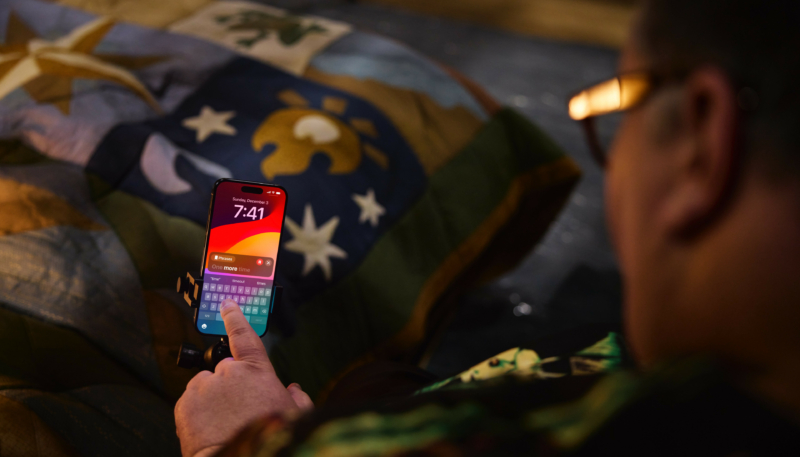Apple has shared a heartwarming ad that will make a stone cry. The ad promotes its new “Personal Voice” accessibility feature, which is available in iOS 17, iPadOS 17, and macOS Sonoma 14.
Personal Voice allows users at risk of losing their ability to speak to create a synthesized voice that sounds similar to their actual voice, allowing them to continue to communicate with others.
Personal Vice works in tandem with a second accessibility feature called Live Speech, in which users type what they want to say on their device, which is then spoken aloud during in-person conversations, phone calls, and FaceTime calls.
The video, entitled “The Lost Voice” shows physician and disability advocate Tristram Ingham uses Personal Voice and Live Speech to read aloud a bedtime story to a young girl.
About Tristram Ingham
New Zealand-native Ingham has facioscapulohumeral muscular dystrophy (FSHD), which causes progressive muscle degeneration starting in the face, shoulders, and arms, and can ultimately lead to the inability to speak, feed oneself, or in some cases, blink the eyes. In 2013, he began using a wheelchair, and in recent years he has noticed changes in his voice.
“I find that by the end of a long day, just bringing up my voice gets a bit harder,” he says, recounting a recent, frustrating incident: “I had to give a conference presentation just last month, and it turned out that, on the day, I wasn’t able to deliver it because of my breathing. So I had to get someone else to present for me, even though I had written it.”
In the future, it is possible Ingham may not be able to use his speaking voice at all. “I’m very aware on a professional level that using my voice is getting harder. I am aware that when I get more fatigued, I get quieter, harder to understand,” he says, noting the cognitive dissonance of a progressive condition. “But on a human level, I put that out of my mind, because what can one do about it?”
More details about Ingham’s life can be found in an Apple Stories article shared today.
Setting Up Personal Voice
Personal Voice is currently available for English-speaking users only. Apple says the feature uses on-device machine learning for privacy and security.
To set up Personal Voice, do the following:
- Confirm that you have iOS 17 or later installed on your iPhone.
- In the Settings app, scroll down and tap “Accessibility.”
- Scroll down on the next screen and tap on “Personal Voice.”
- Tap on “Create a Personal Voice.”
- Unlock the feature using Face ID or Touch ID.
- Tap on “Continue” to move through the information screens.
- Name your personal voice and select “Continue.”
- Check your sound quality and start repeating the phrases displayed on screen.
- Follow the on-screen guide through repeating a total of 150 phrases in your natural voice.
Since your Personal Voice is generated on your iPhone only when the device is locked and charging, the time it takes to complete the needed processing can vary, taking from one to three days to complete. You will receive a notification on your iPhone when the process has been completed.


